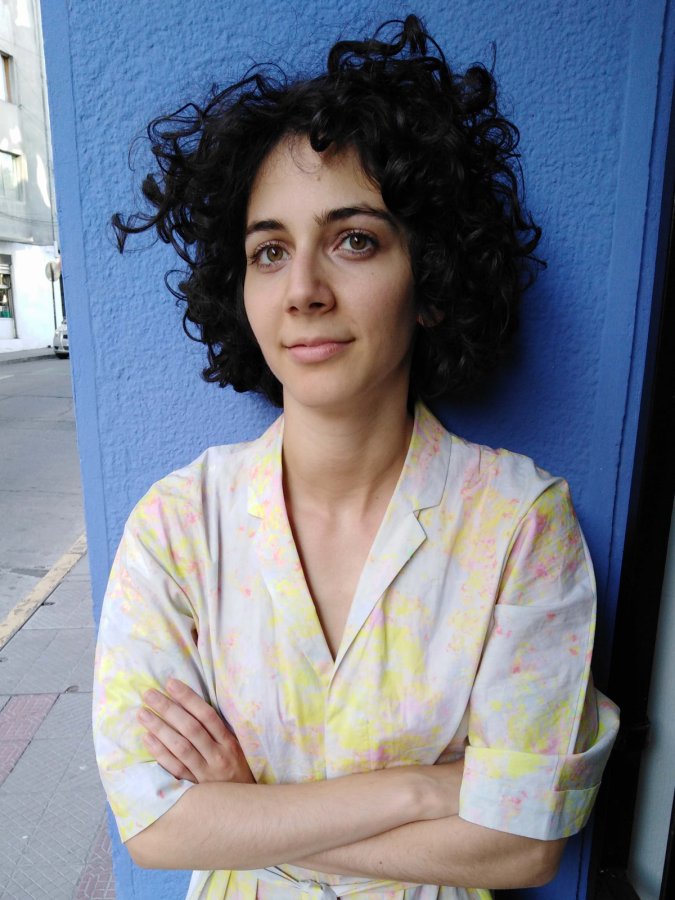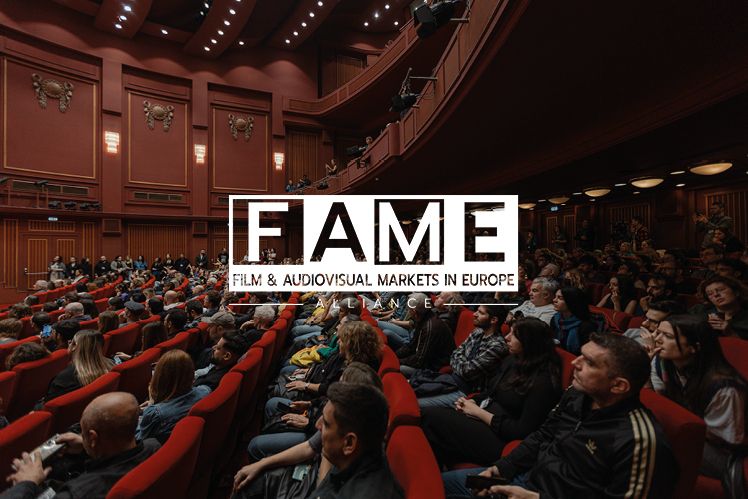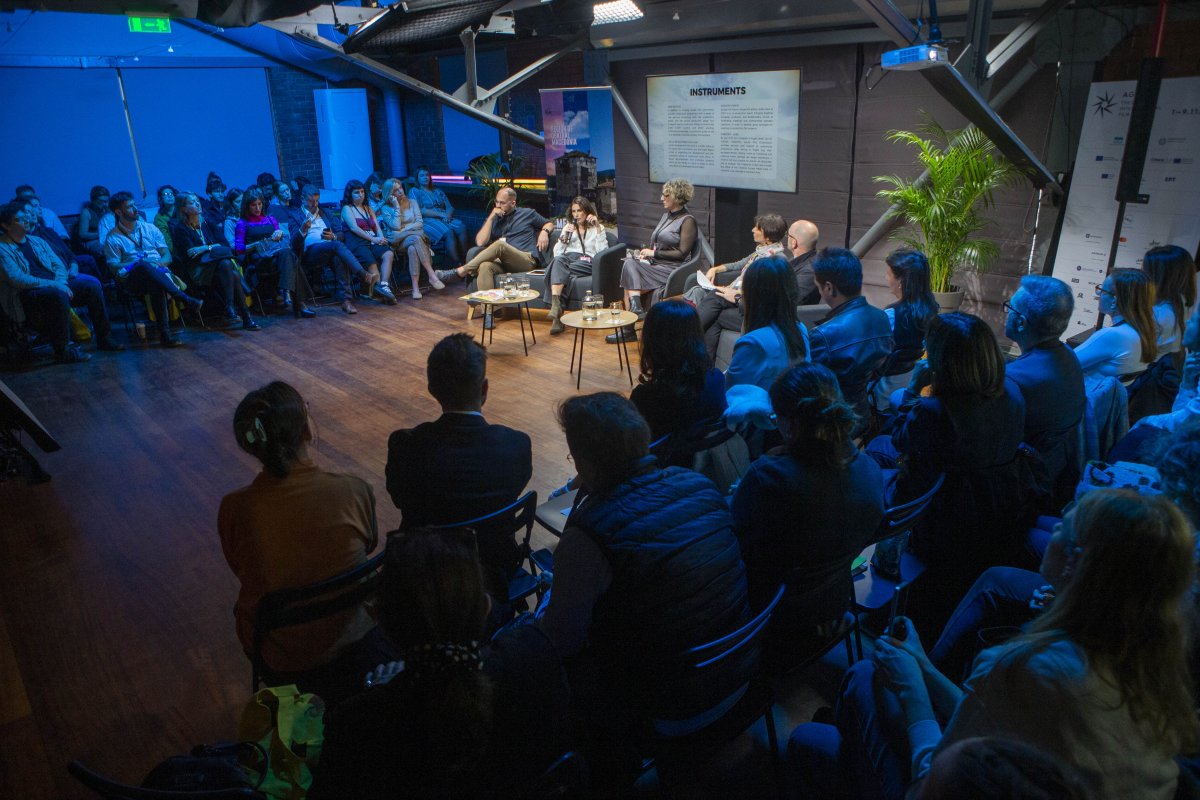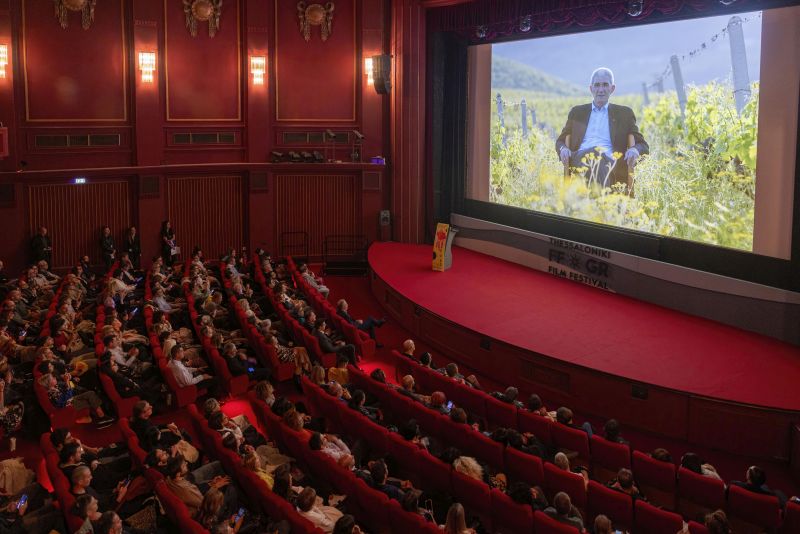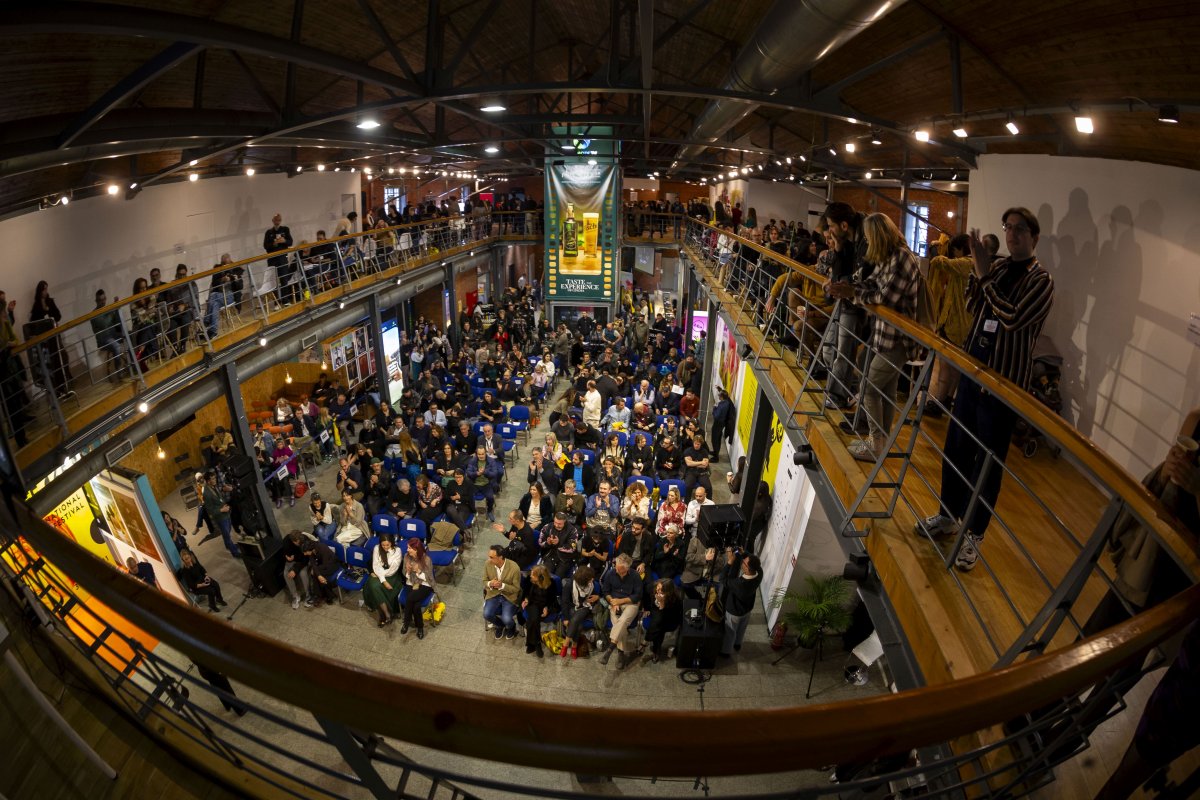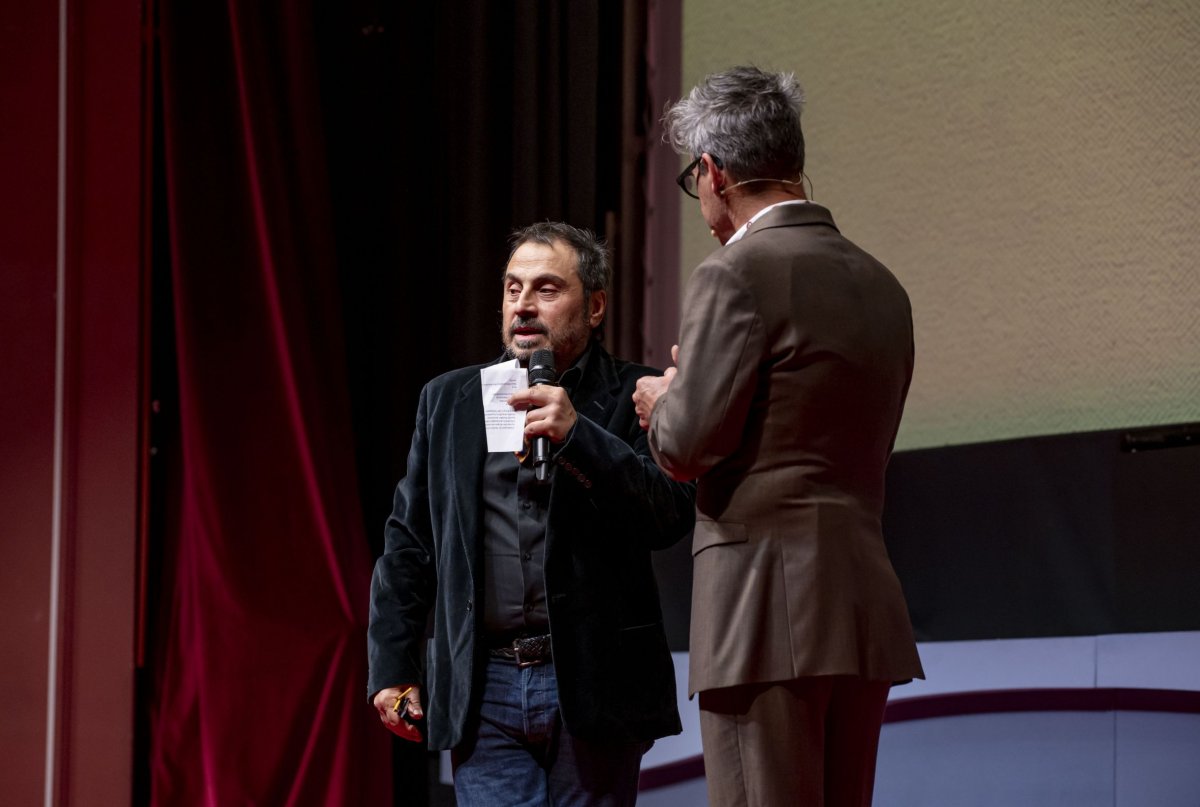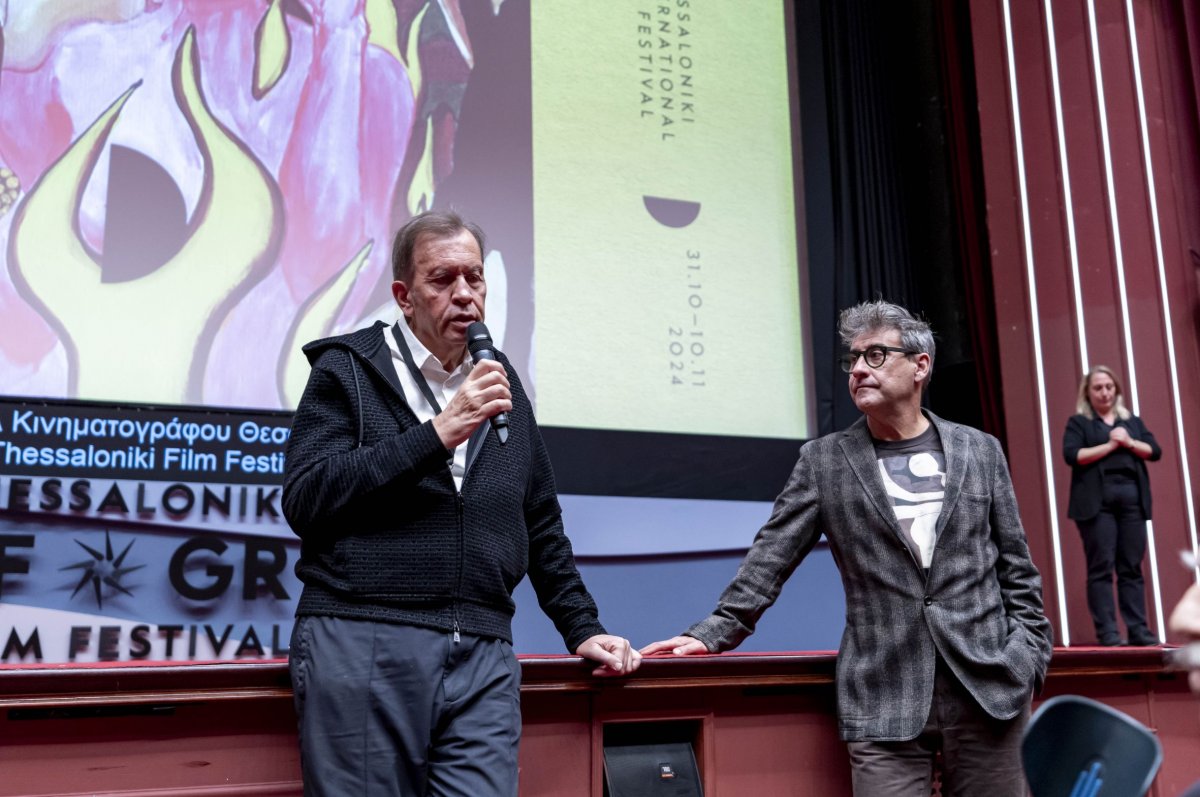Within the framework of the 25th Thessaloniki Documentary Festival, the Greek Documentary Association organized a masterclass on the subject of How documentaries can improve their visibility, on Tuesday, March 7th, at John Cassavetes theater. The keynote speaker of the event was Paul Rieth from Germany, an audience strategist, marketing crowdfunding consultant, and producer designer, who gave useful tips on finding ways to identify, reach, and engage specific audiences from the early stages of the making of a documentary.
The president of the Greek Documentary Association, Anneta Papathanasiou, first took the floor. "I am very pleased that you are attending the masterclass organized by the Greek Documentary Association. I would like to present to you, Paul Rieth, who will talk about strategies to attract audiences to our films. This is an important issue, which we have discussed numerous times with our members."
Paul Rieth introduced himself to the audience immediately afterwards. "I've always enjoyed running different projects. I'm a producer, an audience strategist as well as a marketing and crowdfunding consultant based in Berlin. I often give lectures and presentations at universities, colleges and film festivals. I am a professor and consultant in the field of audience design for Torino Film Lab's Feature Lab. My agency, GET YOUR CROWD, offers consulting or workshops for companies, organizations and individuals in strategy planning, audience targeting, crowdfunding and digital marketing. In addition to strategic planning and campaigns, the company produces a variety of audiovisual content. Since 2021 I have been a member of Film University Babelsberg in the field of Audience Design, Innovation and Entrepreneurship. I have also written the book ‘Dok & Crowd’, which focuses on the German documentary industry."
He continued on, focusing more on ways to attract audiences. "Films are made for the audience to see. We all agree on that. If we take the above motto for granted, we notice that documentaries have a hard time finding their proper place in the distribution circuit. Looking at the ways in which documentaries try to attract audiences in both theaters and VOD distribution, it is evident that limited budgets in marketing are one of the biggest challenges. So how can audiences help our work? Through funding is the answer. Namely, through crowdfunding and crowd investing - in the latter practice, the audience gives a small amount of capital to the filmmaker, which is then “reimbursed” from the profits generated by the funded project. Additionally, through donations made through websites and social media, and through subscriptions to platforms. In order for someone to see your material they have to pay for it. Also, you have to get over the notion that if you ask for money, you look like you are begging. Instead, showcase the fact that you have something to offer. When someone gives money for our project it is a powerful motivator and commits us to completing it. The support of the audience through crowdsourcing is also important. Through this, the audience helps with research for writing a script, finding a suitable title, creating artwork and spreading the project online through social media, the press and the traditional practice of word of mouth."
Mr Rieth also explained the importance of guerrilla marketing. "It is an advertising strategy in which a company uses unexpected and/or unconventional interactions to promote a product or service. Of course, I am not suggesting that you do anything extreme, but in my opinion, anything that happens outdoors attracts attention and I find it very creative. It is advisable to work with people who already have their audience and do not need to create it from scratch, such as activists or educational organizations that can help with your work. Additionally, I love it when creators test their audience through test screenings. In America, it's a common practice and this is how filmmakers find out what can go wrong with the film. Unfortunately, in Germany, you hear too often misplaced phrases like ‘the test screening didn't go well because the audience was stupid’. Sadly, this shows that we don't trust our audience and that we don't listen to their needs."
The masterclass progressed with information on strategies in relation to audience design: "It is the process of raising awareness among the audience about films in the early stages of development. This means that with the director, producer and various other contributors we get together and discuss ideas. From crew and distributors to the subject matter of the film, the characters, the genre, the music, the location, the markets in which it will be shown and the funding. Because time is limited, we need to know what audience we want to target from the initial planning of the film. So, the film's development strategy has to be defined very early on. Research the general context of the film, the themes you will address, think about what funds you have at your disposal, define your goals for what you want to achieve with your work, which audience you want to target (local screenings may be needed in places where audiences don't have access to cinemas) and identify the core of the story. The more original, the better. You need to network on social media and create a professional profile on LinkedIn. Be sure to find the perfect team and integrate it into the next stages of your project. Also, don't forget the digital footprint. That is to say, the extensive research you will do to find what exists on the internet in terms of articles, pages or if anything negative has been written about the topic you want to engage in."
When asked if the project's story should change because the audience's preferences change, Mr Rieth replied: "We don't change what we promised to offer. We don't tell our audience that we will present a romantic story and then end up presenting a completely different storyline. You have to stay true to your script so there is transparency about what you want to present."
Mr Rieth then referred to the role of an impact producer. "This terminology does not differ much from strategic planning for audience engagement. Essentially, it is the role that someone takes on in order to focus on the core message of the film, its impact on the audience and the steps to get there. You have to create a big campaign to promote the film with the goal of activating and engaging the audience early on."
The discussion continued on addressing the role of crowdfunding. "This refers to the practice of funding a project or venture by collecting money from a large number of individuals, each contributing a relatively small amount, usually through the internet. This particular practice gives you the freedom not to be tied to TV channels or large organizations. Of course, it doesn't solve all your problems because the amounts are not that large. However, it is a means to find co-producers more easily. In addition, it allows you to build a name as a filmmaker. Even if you don't use it for the money, you will have an idea of how your idea is perceived by the audience. Apart from that, the film’s premiere, festival trips, screenings, and anything else you ask for from your audience can be funded as long as you communicate it correctly. Some of the crowdfunding platforms include Kickstarter, Pozible, gofundme, and Kiss Kiss Bank Bank. Two successful examples of crowdfunded documentaries are Who the f#@% is Frank Zappa with $1,126,036 and The Bill Nye Film with $859,425. As mentioned earlier, crowdfunding is all about transparency. You need to clearly state from the outset what you are asking for and what you will create. And a reminder, always ask for more than what you actually need to account for additional expenses, such as taxes and marketing campaigns. At the end of the day, crowdfunding gives you an idea of how your creation will be received by the public."




